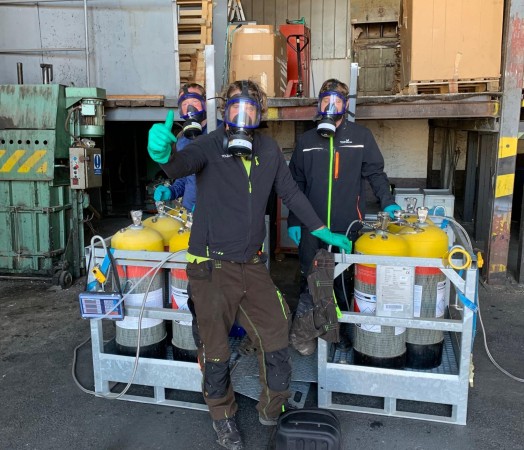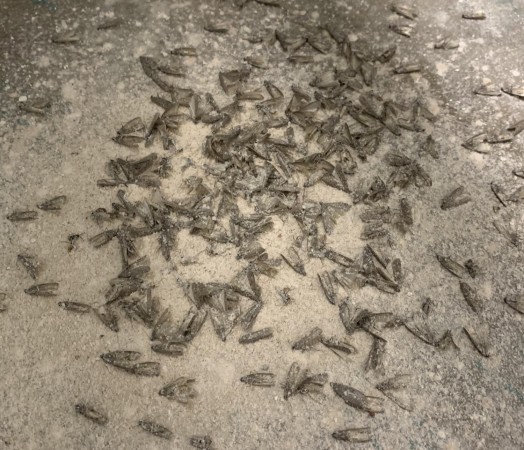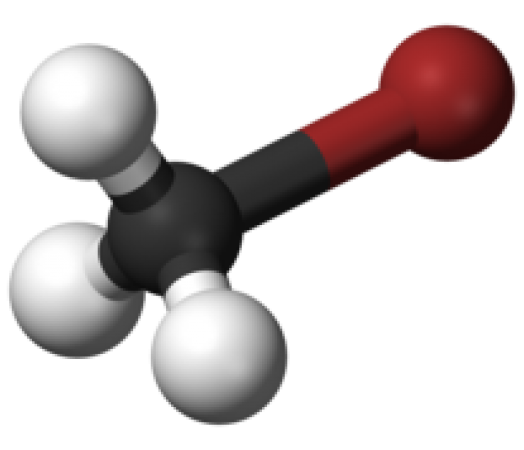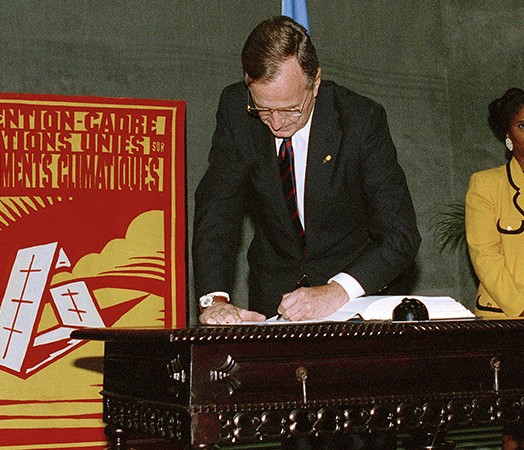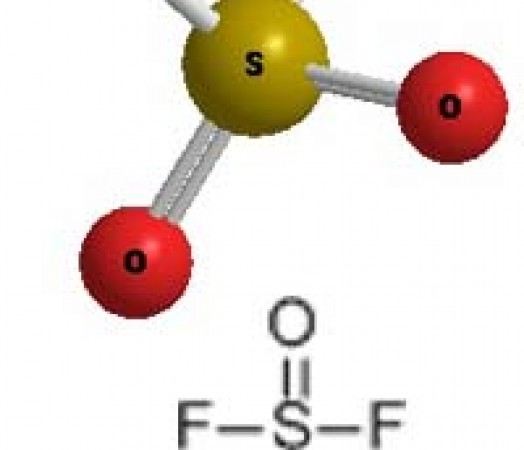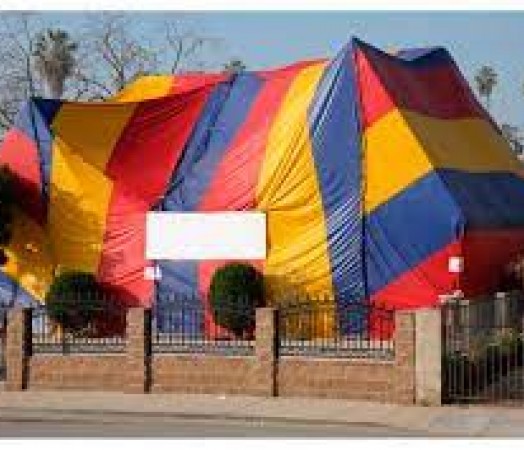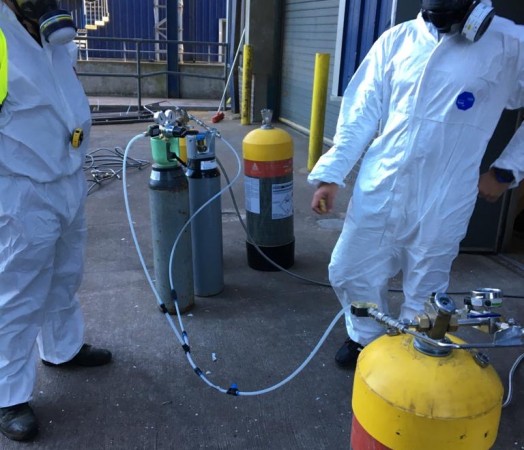Building Fumigations- How to completely rid your facility of pests overnight
Friday 16th April 2021
Would you advocate for a large amount of a deadly and persistent greenhouse gas to be released on your site? Me neither.
At Dealey we went for the natural option for our building fumigation services and consequently found ourselves at the forefront of building fumigations in the UK. Let me tell you how we got there.
What Is Building Fumigation?
Essentially it is filling up a whole structure with gas that will eradicate all pest species within that structure. It is always using gasses that are 100% effective against the target pest and it is always measured and controlled.
It is measured to make sure that the right levels of gas have reached the right parts of the buildings to get rid of every pest. Measurements are taken real-time and with no small amount of precision, always considered against temperature and over time according to Haber’s Rule (more on how we use the Haber Rule in fumigation in another blog post in the future I think).
It is always controlled to make it 100% safe. You cannot get an inexperienced fumigator carrying out building fumigations, it just isn’t possible.
So with these factors in play, with building fumigation you end up with a pest control treatment that is 100% effective and 100% safe.
How Building Fumigation has Changed Over Time and How Some Building Fumigation Companies Haven’t Learned the Lessons of History.
The practice of building fumigation has been fraught with difficulty and moral ambiguity until 2019 when we introduced our building fumigation service.
When I first started in my fumigation career, there was a very widely used fumigant called Methyl Bromide or MeBr. It was widely considered a wonder-gas and could be used on multiple items like buildings, mills, warehouses, food manufacturing plants, food products, shipping containers, wood etc.
The problem was, it was burning a hole in the earth’s atmosphere. Along with CFCs and HFCs it was discovered in the 1980s that a group of chemicals were depleting the ozone layer. This list of ozone depleters were included in a list of chemicals that would be outlawed for widespread use at the signing of the Montreal Protocol in 1987. https://www.epa.gov/ozone-layer-protection/ozone-depleting-substances
Luckily for us, we at Dealey began our fumigation service in 1989 when all of this was coming out. This led to the board of directors making the (fairly obvious in hindsight) choice to never use Methyl Bromide. We stuck to the gasses that didn’t have the devastating environmental impact, thank you very much.
The Montreal Protocol ensured there was a ‘phasing-out’ of the use of Methyl Bromide and its use was completely outlawed in the UK in 2002. The fumigation industry was transformed as a consequence and all of those happy-go-lucky fumigators using the wonder-gas suddenly found themselves with nothing to use.
Many of these fumigation companies went back to day-to-day pest control and never fumigated again.
A Replacement Gas?
At the time there was only one ready replacement for MeBr and it was called sulfuryl fluoride or SF for short. SF was a chemical that was used over in the United States as a timber treatment for termites and wood boring insects. The registration for the chemical could be brought over to the UK with a much smaller investment than trying to come up with an entirely novel fumigant for the UK market.
So, the gas was quickly repurposed with some fairly hefty restrictions.
Firstly it could only be used on empty structures, no more applications to food.
Secondly it was more expensive than Methyl Bromide. Much more. Many mills and factories that were used to the relatively simple and cheap building fumigations that were performed using methyl bromide, suddenly found themselves looking at a very large budget line that they would not be prepared to afford.
Thirdly, the use of SF was limited to a small amount of pest insects. If it was being used against rodents, that would be illegal.
To make things worse for SF it was discovered in 2009 that the scientific data behind the way that SF interacts with the environment was on shaky ground.
It was claimed by the manufacturers of SF that the gas only stayed in the atmosphere for 4.5 years, which doesn’t sound that bad. Unfortunately, independent tests were caried out that verified a much longer atmospheric life for Sufluryl Flouride, 36 years.
To be clear, that means that once a building fumigation is underway using sulfuryl fluoride, the gas will remain in the atmosphere for another 36 years. There were also identified non-atmospheric sinks for the gas, primarily being the oceans. So, not only was SF polluting the atmosphere, but the seas as well.
Because the atmospheric life of sulfuryl fluoride was so drastically underestimated by the manufacturers, it wasn’t until the new data was available that scientists began to consider the environmental impact of SF.
Dr Ron Prinn from MIT puts it best:
“Our analysis has shown that the lifetime is about 36 years, or eight times greater than previously thought, with the ocean being its dominant sink," Prinn says. So it would become "a greenhouse gas of some importance if the quantity of its use grows as people expect."
“Researchers at NOAA (National Oceanic and Atmospheric Administration) indicate that, ton for ton, it is about 4,800 times more potent a heat-trapping gas than carbon dioxide.”
https://news.mit.edu/2009/prinn-greenhouse-tt0311
To summarise, from 2002 until 2019, building fumigation was:
- Repurposed from another field of use
- Expensive
- Limited
- Bad for the environment
Change is clearly needed
And this is how things remained until 2019. The only structural fumigant available on the UK market was sulfuryl fluoride, marketed in the UK as ProFume.
In 2019, Bluefume, a new building fumigant was introduced and finally we had a building fumigation solution that fitted our Core Values.
For us it ticks all the boxes. It is a natural gas, it is very effective against insect pests, it is registered for use against rodents, you have to be very highly trained to apply it, it breaks down very quickly and it has a risk profile much better than the alternative gasses being used.
Dealey Environmental is the only company in the UK which is licensed to use Bluefume and we have the only technicians in the UK who are competent in its use.
Bluefume has a well-documented and well researched atmospheric life. It is much shorter than alternatives, with some studies claiming 1.5 years and the most recent from Harvard claiming an atmopheric life of just a few months.
Once it breaks down in the atmosphere it is into chemicals that plants can use.
It is registered for use on rodents making it a very versatile gas.
It is also very effective, you don’t need a lot to do a fumigation. In some species of pest beetle the effectiveness is 35 times that of the old methyl bromide fumigant.
A table to summarise:
|
ProFume |
Bluefume |
|
30-40 Years (MIT) |
2-4 months (Harvard) |
|
Greenhouse gas |
Not a greenhouse gas |
|
Persistent |
Breaks down into compounds that plants can use |
|
Non-atmospheric sinks |
Breaks down in atmosphere |
|
Not registered for use against rodents |
Has registration for use against rodents |
|
Repurposed from a different application |
Specialised |
|
Expensive |
Cost effective |
|
Requires building heating |
No building heating required |
|
2 day application |
2 day application |

